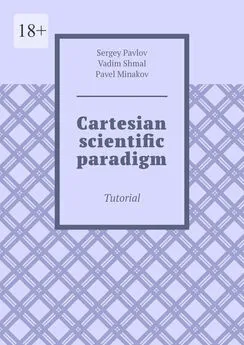Oskar Andreasson - Iptables Tutorial 1.2.2
- Название:Iptables Tutorial 1.2.2
- Автор:
- Жанр:
- Издательство:неизвестно
- Год:неизвестен
- ISBN:нет данных
- Рейтинг:
- Избранное:Добавить в избранное
-
Отзывы:
-
Ваша оценка:
Oskar Andreasson - Iptables Tutorial 1.2.2 краткое содержание
Iptables Tutorial 1.2.2 - читать онлайн бесплатно полную версию (весь текст целиком)
Интервал:
Закладка:
Targets on the other hand specify an action to take on the packet in question. We could for example, DROP or ACCEPT the packet depending on what we want to do. There are also a number of other actions we may want to take, which we will describe further on in this section. Jumping to targets may incur different results, as it were. Some targets will cause the packet to stop traversing that specific chain and superior chains as described above. Good examples of such rules are DROP and ACCEPT. Rules that are stopped, will not pass through any of the rules further on in the chain or in superior chains. Other targets, may take an action on the packet, after which the packet will continue passing through the rest of the rules. A good example of this would be the LOG, ULOG and TOS targets. These targets can log the packets, mangle them and then pass them on to the other rules in the same set of chains. We might, for example, want this so that we in addition can mangle both the TTL and the TOS values of a specific packet/stream. Some targets will accept extra options (What TOS value to use etc), while others don't necessarily need any options - but we can include them if we want to (log prefixes, masquerade-to ports and so on). We will try to cover all of these points as we go through the target descriptions. Let us have a look at what kinds of targets there are.
ACCEPT target
This target needs no further options. As soon as the match specification for a packet has been fully satisfied, and we specify ACCEPT as the target, the rule is accepted and will not continue traversing the current chain or any other ones in the same table. Note however, that a packet that was accepted in one chain might still travel through chains within other tables, and could still be dropped there. There is nothing special about this target whatsoever, and it does not require, nor have the possibility of, adding options to the target. To use this target, we simply specify -j ACCEPT.
NoteWorks under Linux kernel 2.3, 2.4, 2.5 and 2.6.
CLASSIFY target
The CLASSIFY target can be used to classify packets in such a way that can be used by a couple of different qdiscs (Queue Disciplines). For example, atm, cbq, dsmark, pfifo_fast, htb and the prio qdiscs. For more information about qdiscs and traffic controlling, visit the Linux Advanced Routing and Traffic Control HOW-TO webpage.
The CLASSIFY target is only valid in the POSTROUTING chain of the mangle table.
Table 11-1. CLASSIFY target options
| Option | --set-class |
| Example | iptables -t mangle -A POSTROUTING -p tcp --dport 80 -j CLASSIFY --set-class 20:10 |
| Explanation | The CLASSIFY target only takes one argument, the --set-class. This tells the target how to class the packet. The class takes 2 values separated by a coma sign, like this MAJOR:MINOR. Once again, if you want more information on this, check the Linux Advanced Routing and Traffic Control HOW-TO webpage. |
NoteWorks under Linux kernel 2.5 and 2.6.
CLUSTERIP target
The CLUSTERIP target is used to create simple clusters of nodes answering to the same IP and MAC address in a round robin fashion. This is a simple form of clustering where you set up a Virtual IP (VIP) on all hosts participating in the cluster, and then use the CLUSTERIP on each host that is supposed to answer the requests. The CLUSTERIP match requires no special load balancing hardware or machines, it simply does its work on each host part of the cluster of machines. It is a very simple clustering solution and not suited for large and complex clusters, neither does it have built in heartbeat handling, but it should be easily implemented as a simple script.
All servers in the cluster uses a common Multicast MAC for a VIP, and then a special hash algorithm is used within the CLUSTERIP target to figure out who of the cluster participants should respond to each connection. A Multicast MAC is a MAC address starting with 01:00:5e as the first 24 bits. an example of a Multicast MAC would be 01:00:5e:00:00:20. The VIP can be any IP address, but must be the same on all hosts as well.
ImportantRemember that the CLUSTERIP might break protocols such as SSH et cetera. The connection will go through properly, but if you try the same time again to the same host, you might be connected to another machine in the cluster, with a different keyset, and hence your ssh client might refuse to connect or give you errors. For this reason, this will not work very well with some protocols, and it might be a good idea to add separate addresses that can be used for maintenance and administration. Another solution is to use the same SSH keys on all hosts participating in the cluster.
The cluster can be loadbalanced with three kinds of hashmodes. The first one is only source IP (sourceip), the second is source IP and source port (sourceip-sourceport) and the third one is source IP, source port and destination port (sourceip-sourceport-destport). The first one might be a good idea where you need to remember states between connections, for example a webserver with a shopping cart that keeps state between connections, this load-balancing might become a little bit uneven -- different machines might get a higher loads than others, et cetera -- since connections from the same source IP will go to the same server. The sourceip-sourceport hash might be a good idea where you want to get the load-balancing a little bit more even, and where state does not have to be kept between connections on each server. For example, a large informational webpage with perhaps a simple search engine might be a good idea here. The third and last hashmode, sourceip-sourceport-destport, might be a good idea where you have a host with several services running that does not require any state to be preserved between connections. This might for example be a simple ntp, dns and www server on the same host. Each connection to each new destination would hence be "renegotiated" -- actually no negotiation goes on, it is basically just a round robin system and each host receives one connection each.
Each CLUSTERIP cluster gets a separate file in the /proc/net/ipt_CLUSTERIP directory, based on the VIP of the cluster. If the VIP is 192.168.0.5 for example, you could cat /proc/net/ipt_CLUSTERIP/192.168.0.5 to see which nodes this machine is answering for. To make the machine answer for another machine, lets say node 2, add it using echo "+2" >> /proc/net/ipt_CLUSTERIP/192.168.0.5. To remove it, run echo "-2" >> /proc/net/ipt_CLUSTERIP/192.168.0.5.
Table 11-2. CLUSTERIP target options
| Option | --new |
| Example | iptables -A INPUT -p tcp -d 192.168.0.5 --dport 80 -j CLUSTERIP --new ... |
| Explanation | This creates a new CLUSTERIP entry. It must be set on the first rule for a VIP, and is used to create a new cluster. If you have several rules connecting to the same CLUSTERIP you can omit the --new keyword in any secondary references to the same VIP. |
| Option | --hashmode |
| Example | iptables -A INPUT -p tcp -d 192.168.0.5 --dport 443 -j CLUSTERIP --new --hashmode sourceip ... |
| Explanation | The --hashmode keyword specifies the kind of hash that should be created. The hashmode can be any of the following three. |
| • sourceip | |
| • sourceip-sourceport | |
| • sourceip-sourceport-destport | |
| The hashmodes has been extensively explained above. Basically, sourceip will give better performance and simpler states between connections, but not as good load-balancing between the machines. sourceip-sourceport will give a slightly slower hashing and not as good to maintain states between connections, but will give better load-balancing properties. The last one may create very slow hashing that consumes a lot of memory, but will on the other hand also create very good load-balancing properties. | |
| Option | --clustermac |
| Example | iptables -A INPUT -p tcp -d 192.168.0.5 --dport 80 -j CLUSTERIP --new --hashmode sourceip --clustermac 01:00:5e:00:00:20 ... |
| Explanation | The MAC address that the cluster is listening to for new connections. This is a shared Multicast MAC address that all the hosts are listening to. See above for a deeper explanation of this. |
| Option | --total-nodes |
| Example | iptables -A INPUT -p tcp -d 192.168.0.5 --dport 80 -j CLUSTERIP --new --hashmode sourceip --clustermac 01:00:5e:00:00:20 --total-nodes 2 ... |
| Explanation | The --total-nodes keyword specifies how many hosts are participating in the cluster and that will answer to requests. See above for a deeper explanation. |
| Option | --local-node |
| Example | iptables -A INPUT -p tcp -d 192.168.0.5 --dport 80 -j CLUSTERIP --new --hashmode sourceip --clustermac 01:00:5e:00:00:20 --total-nodes 2 --local-node 1 |
| Explanation | This is the number that this machine has in the cluster. The cluster answers in a round-robin fashion, so once a new connection is made to the cluster, the next machine answers, and then the next after that, and so on. |
| Option | --hash-init |
| Example | iptables -A INPUT -p tcp -d 192.168.0.5 --dport 80 -j CLUSTERIP --new --hashmode sourceip --clustermac 01:00:5e:00:00:20 --hash-init 1234 |
| Explanation | Specifies a random seed for hash initialization. |
WarningThis target is in violation of the RFC 1812 - Requirements for IP Version 4 Routers RFC, so be wary of any problems that may arise. Specifically, section 3.3.2 which specifies that a router must never trust another host or router that says that it is using a multicast mac.
NoteWorks under late Linux 2.6 kernels, marked experimental.
CONNMARK target
The CONNMARK target is used to set a mark on a whole connection, much the same way as the MARK target does. It can then be used together with the connmark match to match the connection in the future. For example, say we see a specific pattern in a header, and we don't want to mark just that packet, but the whole connection. The CONNMARK target is a perfect solution in that case.
The CONNMARK target is available in all chains and all tables, but remember that the nat table is only traversed by the first packet in a connection, so the CONNMARK target will have no effect if you try to use it for subsequent packets after the first one in here. It can take one of four different options as seen below.
Table 11-3. CONNMARK target options
| Option | --set-mark |
| Example | iptables -t nat -A PREROUTING -p tcp --dport 80 -j CONNMARK --set-mark 4 |
| Explanation | This option sets a mark on the connection. The mark can be an unsigned long int, which means values between 0 and 4294967295l is valid. Each bit can also be masked by doing --set-mark 12/8. This will only allow the bits in the mask to be set out of all the bits in the mark. In this example, only the 4th bit will be set, not the 3rd. 12 translates to 1100 in binary, and 8 to 1000, and only the bits set in the mask are allowed to be set. Hence, only the 4th bit, or 8, is set in the actual mark. |
| Option | --save-mark |
| Example | iptables -t mangle -A PREROUTING --dport 80 -j CONNMARK --save-mark |
| Explanation | The --save-mark target option is used to save the packet mark into the connection mark. For example, if you have set a packet mark with the MARK target, you can then move this mark to mark the whole connection with the --save-mark match. The mark can also be masked by using the --mask option described further down. |
| Option | --restore-mark |
| Example | iptables -t mangle -A PREROUTING --dport 80 -j CONNMARK --restore-mark |
| Explanation | This target option restores the packet mark from the connection mark as defined by the CONNMARK. A mask can also be defined using the --mask option as seen below. If a mask is set, only the masked options will be set. Note that this target option is only valid for use in the mangle table. |
| Option | --mask |
| Example | iptables -t mangle -A PREROUTING --dport 80 -j CONNMARK --restore-mark --mask 12 |
| Explanation | The --mask option must be used in unison with the --save-mark and --restore-mark options. The --mask option specifies an and-mask that should be applied to the mark values that the other two options will give. For example, if the restored mark from the above example would be 15, it would mean that the mark was 1111 in binary, while the mask is 1100. 1111 and 1100 equals 1100. |
NoteWorks under Linux kernel 2.6.
Читать дальшеИнтервал:
Закладка:










